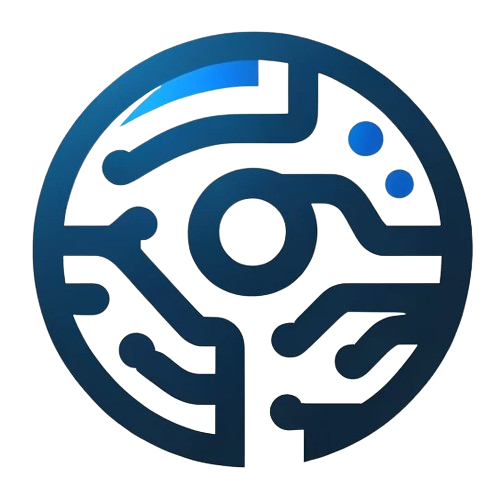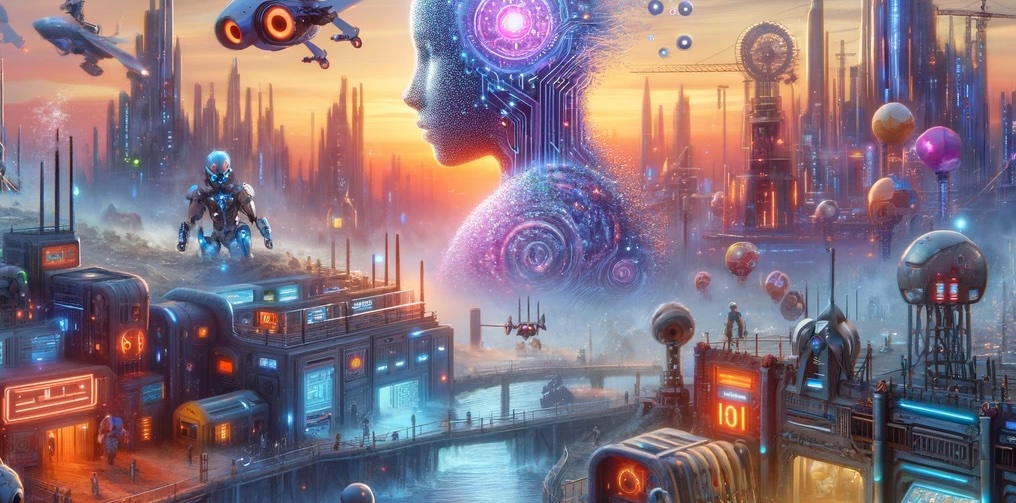In an era dominated by digital innovations, the emerging concept of Physical AI represents a groundbreaking shift, merging the capabilities of artificial intelligence with the tangible aspects of the physical world. This convergence aims to create intelligent systems that are not only aware of their digital environment but can also interact with the physical world in meaningful ways. This blog post explores the exciting domain of Physical AI, highlighting its key aspects, potential applications, and the significant role it is expected to play in the coming years.
Understanding Physical AI
Physical AI refers to the integration of AI technologies into physical entities, enabling machines not just to compute or analyze data but to perform physical tasks that require interaction with the real world. It extends AI’s reach beyond screens and speakers to robots, drones, and other mechanical devices that can see, touch, manipulate, and navigate their surroundings.
Key Characteristics of Physical AI:
- Interaction with Physical Environment: Physical AI systems can sense, respond, and effectively interact with their physical surroundings. This might involve navigating through space, manipulating objects, or performing physical tasks that typically require human intervention.
- Autonomy: Many Physical AI systems are designed to operate independently, making decisions and taking actions without human input based on pre-programmed algorithms and real-time data analysis.
- Robotics and Automation: Physical AI often involves robotics, where robots are equipped with AI technologies to enhance their functionality. This allows them to perform complex operations in manufacturing, healthcare, agriculture, and other fields.
- Sensory Perception: These systems use various sensors (like cameras, infrared, and tactile sensors) to gather data from their environment. AI processes this data to make informed decisions about appropriate responses and actions.
Key Aspects of Physical AI
1. Robotic Process Automation (RPA)
- Overview: RPA involves the use of AI-driven robots to automate routine physical tasks traditionally performed by humans. These tasks range from assembling products in a factory line to picking and packing orders in warehouses.
- Significance: RPA increases efficiency, reduces human error, and allows human workers to focus on more complex and creative tasks.
2. Autonomous Vehicles
- Overview: Physical AI plays a crucial role in the development of autonomous vehicles, including cars, drones, and ships. These vehicles use AI to perceive their environment, make decisions, and navigate without human intervention.
- Significance: This technology promises to revolutionize transportation, enhancing safety, reducing traffic congestion, and lowering emissions.
Applications of Physical AI
Healthcare Robotics
- Application: In healthcare, Physical AI can power robotic surgeons that perform precise surgeries or rehabilitation robots that assist patients in regaining mobility.
- Impact: These applications can lead to more successful outcomes, faster recovery times, and access to high-quality care in remote locations.
Smart Manufacturing
- Application: AI-enabled robots in manufacturing can perform complex assembly tasks, conduct quality control, and adapt to changes in production demand without human intervention.
- Impact: Smart manufacturing leads to higher productivity, greater product consistency, and the ability to quickly customize products.
Developing Physical AI involves a sophisticated array of tools and technologies that bridge software capabilities with hardware performance. These tools and technologies not only empower the AI to interact with its environment but also enable it to learn from and adapt to its interactions. Here’s an overview of the essential tools and technologies required to develop Physical AI systems:
1. Robotics Platforms
Physical AI heavily relies on robotics to interact with the physical world. This includes:
- Industrial Robots: For tasks like assembly, painting, and welding in manufacturing environments.
- Service Robots: Used in healthcare, retail, or hospitality for delivering goods, providing information, or performing surgery.
- Autonomous Mobile Robots (AMRs): For navigation and transportation tasks in warehouses, hospitals, and on streets.
2. Sensors and Actuators
- Sensors: These are critical for robots to perceive their surroundings. Common types include:
- Vision Sensors: Cameras and LiDAR (Light Detection and Ranging) for visual perception.
- Tactile Sensors: To sense touch, pressure, or texture.
- Audio Sensors: Microphones to detect and analyze sounds.
- Environmental Sensors: For detecting temperature, humidity, or chemical compositions.
- Actuators: Devices that convert the AI’s decisions into physical motion or actions. This includes motors, hydraulic systems, and servos.
3. Artificial Intelligence Software
- Machine Learning Frameworks: TensorFlow, PyTorch, and Keras are popular for designing and training AI models that enable robots to learn from data, recognize patterns, and make decisions.
- Computer Vision Libraries: OpenCV for processing and analyzing real-time images and video data to guide robots.
- Natural Language Processing (NLP): Tools like NLTK and spaCy to develop conversational interfaces for robots.
4. Simulation Software
- Gazebo, V-REP, and Microsoft AirSim: These tools offer a simulated environment for testing and refining AI behaviors in a virtual space before deploying them in the real world. Simulation helps in developing safer and more effective AI without the risks and costs associated with physical testing.
5. Control Systems and Middleware
- ROS (Robot Operating System): Provides services designed for a heterogeneous computer cluster such as hardware abstraction, low-level device control, implementation of commonly used functionality, message-passing between processes, and package management.
- IoT Platforms: Such as AWS IoT Core or Microsoft Azure IoT for integrating various devices and sensors into a cohesive system that can collect, analyze, and act on data across the network.
6. Development and Prototyping Tools
- Arduino, Raspberry Pi: Widely used in prototyping parts of a robot or the entire robot itself, especially for tasks that involve simple controls, sensor integration, and testing new concepts.
- 3D Printing: Enables rapid prototyping of parts and components for robots, reducing development time and allowing for quick iteration.
7. Cloud Computing and Data Storage
- Cloud Platforms: Amazon Web Services, Microsoft Azure, and Google Cloud provide scalable computing resources, storage, and even AI-specific tools (like Google AI or Azure Machine Learning) that are essential for processing and storing large volumes of data collected by robotic systems.
8. Ethical and Security Software
- Tools and frameworks that ensure the ethical use of AI and physical security of AI systems are critical, given the potential for misuse or harm.
Developing Physical AI systems requires a multi-disciplinary approach, combining expertise in mechanical engineering, software development, systems engineering, and ethical considerations. As technology advances, the toolkit for developing Physical AI continues to expand, promising even more innovative and capable systems in the future.
Environmental Monitoring and Conservation
- Application: Drones equipped with AI capabilities can monitor wildlife, track environmental changes, and even plant trees in inaccessible areas.
- Impact: This technology provides critical data for conservation efforts and enables proactive environmental management.
Challenges and Ethical Considerations
Despite its potential, the integration of AI into physical tasks presents several challenges:
- Safety: Ensuring that AI-driven physical devices can operate safely alongside humans is paramount.
- Privacy: Devices that can move and interact in physical spaces may raise significant privacy concerns.
- Ethical Use: The deployment of Physical AI must be governed by ethical guidelines to prevent misuse, especially in sensitive areas like surveillance and law enforcement.
The Future of Physical AI
Looking ahead, Physical AI is set to become a transformative force across various sectors. As the technology matures, we can expect broader adoption and more sophisticated applications. Innovations in machine learning, sensor technology, and robotics will further enhance the capabilities of Physical AI, making it an integral part of our everyday lives.
- Predictive Maintenance: AI-driven systems will not only fix but predict mechanical failures before they occur, dramatically reducing downtime.
- Collaborative Robots (Cobots): These robots will work alongside humans without the need for barriers, enhancing productivity and creativity in workplaces.
Conclusion
Physical AI represents a significant leap forward in the evolution of artificial intelligence. By enabling machines to interact with the physical world in intelligent ways, Physical AI is not just a technological advancement but a catalyst for redefining industries and improving human life. As we embrace this new frontier, it is crucial to navigate the challenges responsibly to fully realize the benefits of Physical AI.

